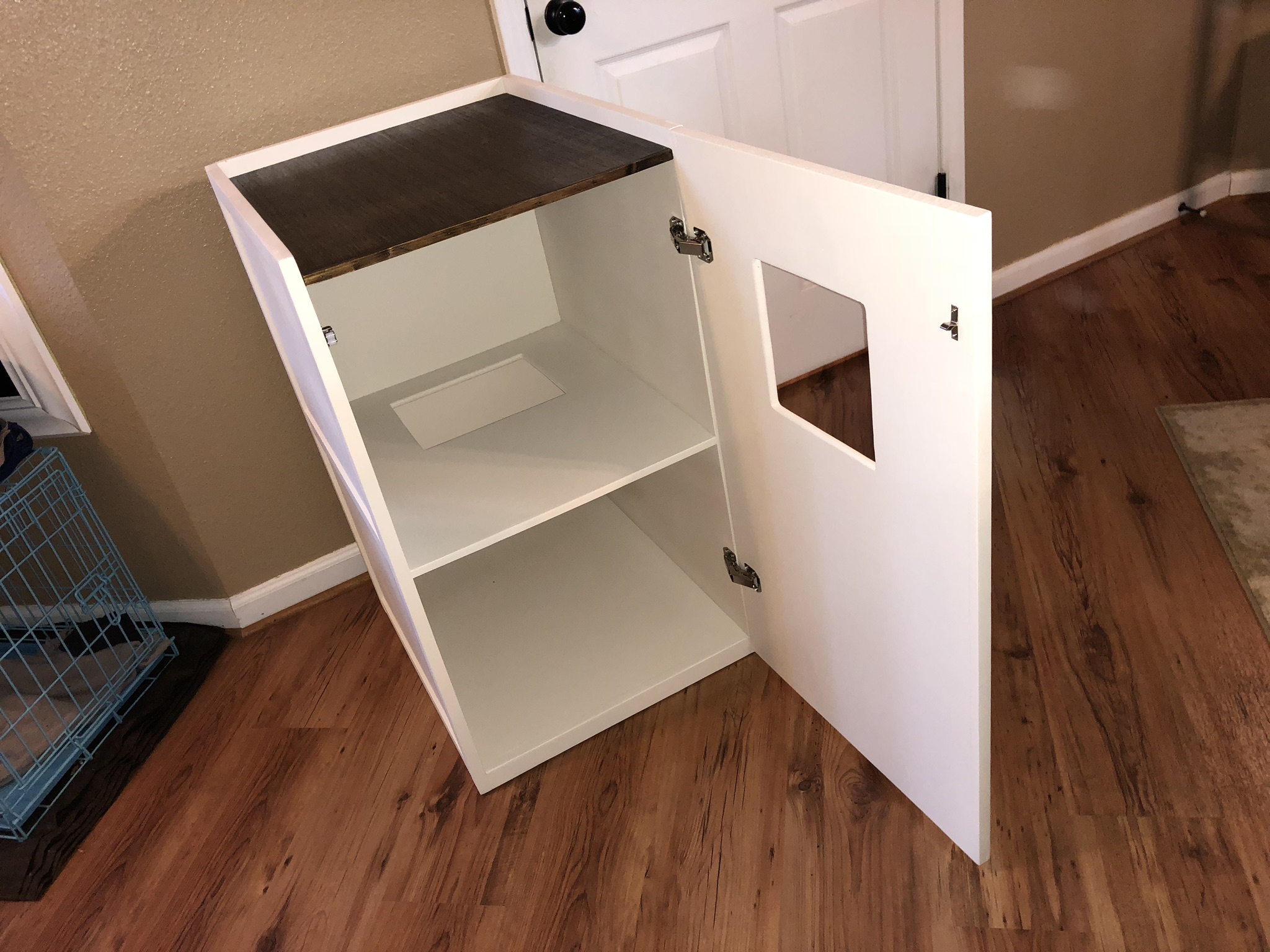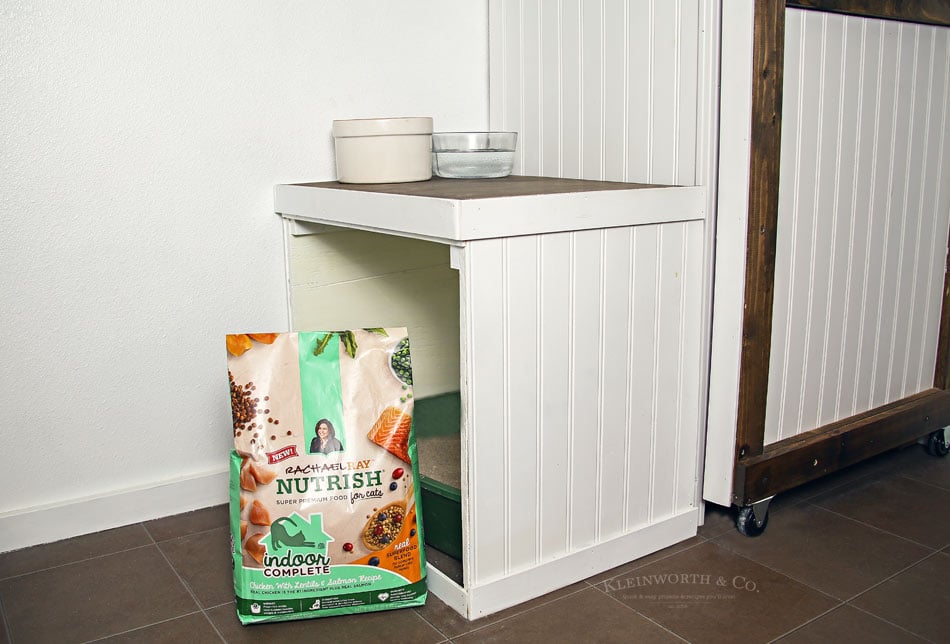The Benefits of a DIY Litter Box Cabinet

A DIY litter box cabinet offers a practical and aesthetically pleasing solution for managing your cat’s waste while enhancing your home’s decor. By concealing the litter box within a custom-built cabinet, you can create a more hygienic and visually appealing environment.
Aesthetic Advantages of Concealing a Litter Box
Concealing a litter box within a cabinet can significantly improve the aesthetics of your home. Instead of a standalone litter box, you can seamlessly integrate it into your existing furniture, creating a more cohesive and visually appealing space. The cabinet can be designed to match your existing decor, blending seamlessly into your room’s design.
Odor Control
A custom-built cabinet can be designed to enhance odor control, creating a more pleasant environment for both you and your cat. By incorporating features such as ventilation, odor-absorbing materials, and a secure seal, you can effectively minimize the spread of unpleasant odors.
Maximizing Space Efficiency
A DIY litter box cabinet can help maximize space efficiency in your home. You can design the cabinet to fit perfectly into a specific area, maximizing space utilization while keeping the litter box concealed.
Enhancing the Overall Look of a Room
A well-designed litter box cabinet can enhance the overall look of a room. You can choose materials, finishes, and styles that complement your existing decor, creating a more cohesive and stylish environment. For example, a cabinet made of natural wood with a rustic finish can blend seamlessly into a farmhouse-style home, while a sleek modern cabinet can enhance the aesthetic of a contemporary space.
Design and Construction Considerations

Building a DIY litter box cabinet is a rewarding project that offers numerous benefits. However, it requires careful planning and consideration to ensure functionality, aesthetics, and longevity.
Designing a Litter Box Cabinet
The design process involves determining the size, shape, and features of the cabinet. This step is crucial for creating a cabinet that effectively accommodates the litter box and meets your specific needs.
- Determine the Size: Measure the litter box to determine its dimensions. Add extra space for easy access and cleaning. Consider the size of the cat and the space available in your home.
- Choose a Shape: Rectangular cabinets are common and offer ample space. However, you can explore other shapes like a corner cabinet for space-saving solutions. The shape should complement your home decor and provide easy access to the litter box.
- Consider Features: Include features like a door, drawers, or shelves for storage, a ventilation system for odor control, and a removable tray for easy cleaning.
Choosing Suitable Materials
The right materials contribute to the durability, aesthetics, and functionality of the cabinet.
- Wood: Plywood, MDF, or solid wood are popular choices. Plywood is affordable and durable, while MDF offers a smooth finish. Solid wood provides a more luxurious look but is more expensive.
- Metal: Metal frames can provide a sturdy structure. However, metal can be prone to scratches and may require additional finishing.
- Plastic: Plastic sheets can be used for creating the cabinet structure, offering affordability and ease of cleaning. However, they might not be as durable as wood or metal.
Cabinet Styles and Suitability
Different cabinet styles cater to diverse needs and aesthetics.
- Traditional: Classic designs with solid wood and intricate carvings are perfect for traditional homes. These cabinets offer a timeless elegance but might be more expensive.
- Modern: Sleek and minimalist designs with clean lines and minimal embellishments are suitable for contemporary homes. These cabinets often feature metal accents and are available in a range of colors.
- Rustic: Rustic cabinets utilize natural wood with knots and imperfections, creating a warm and inviting feel. These cabinets are perfect for homes with a farmhouse or cottage style.
Ventilation and Odor Control, Diy litter box cabinet
Ventilation and odor control are essential for maintaining a clean and pleasant environment.
- Ventilation: Incorporate vents or openings in the cabinet to allow air circulation and prevent odor buildup. This can be achieved through strategically placed holes, grilles, or a dedicated ventilation system.
- Odor Control: Consider using odor-absorbing materials like activated carbon filters or baking soda inside the cabinet. Additionally, using a litter box with an odor-control feature can further minimize unpleasant smells.
DIY Litter Box Cabinet Projects

Now that you’ve considered the benefits, design considerations, and chosen the perfect style for your DIY litter box cabinet, let’s dive into some practical project ideas to bring your vision to life!
Different DIY Litter Box Cabinet Designs
Choosing the right design for your DIY litter box cabinet depends on your space, budget, and desired features. This table compares different designs, materials, and difficulty levels to help you choose the best option:
| Design | Materials | Features | Difficulty Level | Cost |
|---|---|---|---|---|
| Simple Box Cabinet | Plywood, MDF, hinges, paint | Basic enclosure with door | Beginner | Low |
| Open-Shelf Cabinet | Wood, metal brackets, stain | Open shelves for storage | Beginner | Moderate |
| Custom-Built Cabinet | Various wood types, hardware, paint | Tailored to specific dimensions and features | Intermediate | Moderate to High |
| Modular Cabinet | Pre-made cabinet components, hinges, paint | Modular design for easy assembly and customization | Beginner to Intermediate | Moderate |
Step-by-Step Guide for Building a Simple Litter Box Cabinet
Here’s a straightforward guide for building a basic litter box cabinet:
- Plan and Measure: Determine the size of your litter box and the desired dimensions of your cabinet. Sketch a simple design and note all measurements.
- Cut the Wood: Using a saw, cut the wood panels according to your measurements. Remember to factor in the thickness of the wood for accurate dimensions.
- Assemble the Frame: Attach the side panels to the bottom panel using wood glue and screws. Ensure the corners are square and secure.
- Attach the Back Panel: Secure the back panel to the frame using glue and nails or screws.
- Install the Door: Attach the door hinges to the cabinet frame and the door. Ensure the door opens and closes smoothly.
- Add Finishing Touches: Paint or stain the cabinet according to your preference. Install a handle on the door and any desired accessories.
Advanced DIY Litter Box Cabinet Projects
For those seeking more complex and stylish projects, here are some examples:
- Litter Box Cabinet with Built-in Storage: This design incorporates shelves or drawers for storing cat supplies, maximizing space efficiency.
- Litter Box Cabinet with a Vent System: Incorporate a vent system to improve air circulation and minimize odor, creating a healthier environment.
- Litter Box Cabinet with a Removable Litter Box Tray: This design allows for easy litter box cleaning and replacement, enhancing convenience.
- Litter Box Cabinet with a Cat Scratching Post: Combine a litter box cabinet with a scratching post to provide your cat with a designated scratching area while keeping it out of sight.
Resources and Tutorials for Building a Litter Box Cabinet
Many online resources and tutorials offer detailed instructions and visual guides for building a DIY litter box cabinet. Here are a few popular options:
- YouTube: Search for “DIY litter box cabinet” to find numerous videos showcasing different designs, techniques, and step-by-step guides.
- Pinterest: Explore Pinterest for visual inspiration and DIY project ideas, including litter box cabinet designs.
- DIY Websites: Websites like Ana White and Instructables offer free plans and tutorials for building various furniture projects, including litter box cabinets.
Building a DIY litter box cabinet can be a fun and practical project. You can choose from a variety of materials and styles, but if you’re looking for something sleek and modern, consider using a combination of black and wood.
Check out some inspiration for black and wood cabinets to get your creative juices flowing. The contrast between the dark and light colors can create a stylish and sophisticated look that complements any room. With a little planning and effort, you can easily build a DIY litter box cabinet that’s both functional and stylish.
Building a DIY litter box cabinet can be a great way to hide away the litter box and keep your home looking tidy. When choosing hinges for your cabinet, consider black kitchen cabinet hinges, which can add a modern touch.
Black kitchen cabinet hinges come in a variety of styles and finishes, so you can find the perfect match for your cabinet. With a little planning and effort, you can create a stylish and functional litter box cabinet that blends seamlessly with your home decor.
